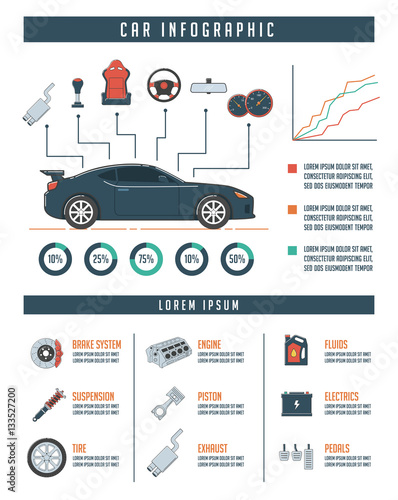Comprehending Your Vehicle'S Warning Lighting: What Do They Really Mean?
Comprehending Your Vehicle'S Warning Lighting: What Do They Really Mean?
Blog Article
Article By-Vinson Gilbert
When you're behind the wheel, those radiant caution lights on your control panel can be a bit difficult. Do you understand what they're trying to tell you about your cars and truck's health? Understanding the significance of these lights is vital for your safety and the durability of your car. So, the following time one of those lights pops up, wouldn't you wish to decode its message properly and take the required steps to address it?
Common Warning Lights and Interpretations
Identify typical warning lights in your vehicle and comprehend their definitions to guarantee risk-free driving.
car deatling consist of the check engine light, which signifies problems with the engine or emissions system. If this light begins, it's crucial to have your lorry inspected promptly.
The oil stress warning light suggests reduced oil stress, requiring immediate attention to avoid engine damages.
A blinking battery light could recommend a faulty charging system, possibly leaving you stranded if not dealt with.
The tire stress monitoring system (TPMS) light signals you to low tire stress, impacting lorry security and gas efficiency. Neglecting this might result in harmful driving problems.
The abdominal light indicates a problem with the anti-lock braking system, compromising your capacity to stop promptly in emergencies.
Finally, the coolant temperature level cautioning light warns of engine overheating, which can lead to serious damages otherwise solved quickly.
Recognizing these usual caution lights will assist you deal with problems without delay and maintain safe driving problems.
Significance of Prompt Attention
Recognizing the typical warning lights in your car is only the very first step; the significance of without delay attending to these cautions can't be highlighted enough to guarantee your safety when traveling.
When a warning light brightens on your control panel, it's your automobile's method of communicating a possible problem that needs attention. Disregarding these warnings can cause more extreme problems in the future, endangering your safety and security and potentially costing you more out of commission.
Trigger interest to alerting lights can prevent failures and mishaps. For example, a blinking check engine light might suggest a misfire that, if left neglected, can cause damage to the catalytic converter. Resolving this promptly can save you from a pricey fixing.
In a similar way, a brake system alerting light may indicate reduced brake fluid or used brake pads, essential components for your security when driving.
DIY Troubleshooting Tips
If you notice a warning light on your dashboard, there are a few do it yourself fixing pointers you can attempt prior to looking for specialist aid.
The very first step is to consult your automobile's handbook to recognize what the specific warning light shows. Often simply click the next internet page can be as basic as a loose gas cap triggering the check engine light. Tightening the gas cap may settle the issue.
Another usual problem is a reduced battery, which can cause various advising lights. Inspecting the battery links for corrosion and guaranteeing they're protected might fix the trouble.
If a warning light continues, you can attempt resetting it by detaching the auto's battery for a few minutes and then reconnecting it. In addition, inspecting your vehicle's liquid levels, such as oil, coolant, and brake fluid, can aid repair alerting lights related to these systems.
Conclusion
In conclusion, recognizing your car's caution lights is important for keeping your car running efficiently and securely. By quickly attending to click the up coming web site and recognizing what they mean, you can avoid expensive repair work and prospective break downs.
Remember to consult your auto's handbook for certain information on each alerting light and take action accordingly to make certain a trouble-free driving experience.
Keep informed, remain safe on the road!
